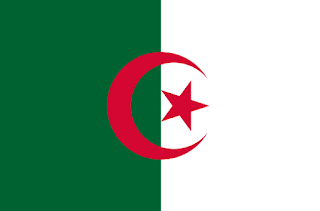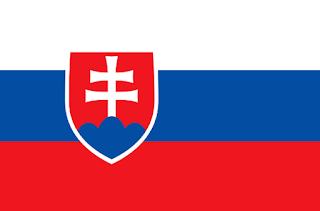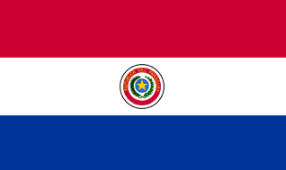FACTS ABOUT NICARAGUA
AMAZING
FACTS ABOUT NICARAGUA
1.
Managua is the capital city of
Nicaragua.
2.
The total population of Nicaragua is 5,966,798.
3.
The natives of Nicaragua are called
Nicaraguans.
4.
The Cordoba (NIO) is the official
currency of Nicaragua.
5.
Nicaragua shares a border with Costa
Rica and Honduras.
6.
Nicaragua consists of three definite
geographical regions: the Atlantic
Lowlands, the North-Central Highlands and the Pacific Lowlands, and the latter
are the most populous region of the country.
7.
Central America’s largest lake is Lake
Nicaragua, which provides the water supply for much of Nicaragua and is the
country’s largest tourist attraction. This lake is enormous and contains the
largest lake island in the world.
8.
Nicaragua’s famous Dual Volcano is the
only one in the world that is fed by two separate flows of magma. This makes it
possible for it to erupt from two types of magma channels.
9.
There are around 430 volcanic islands in
vast Lake Nicaragua. Nicaragua uses the intense steam from deep inside its
volcanoes for geothermal energy.
10.
The country is susceptible to
earthquakes and volcanic activity as well as being extremely susceptible to
hurricanes.
11.
Nicaragua has declared 70 areas as
protected regions of water and land in order to protect their endangered species.
These include different species of monkeys, boa constrictors, jaguars, sloths,
green turtles and sea turtles.
12.
Nicaragua’s wettest months are usually
from June to October and its driest season from December through May. The most
popular time to come visit is usually November.
13.
The eastern, or “Mosquito coast”
of Nicaragua receives the most rainfall in the country.
14.
Almost all the tiny islands in the
Atlantic off the coast of Granada, Nicaragua are for sale. Most prices range in
the millions of dollars.
15.
The higher elevations of the country
have somewhat cooler weather than the tropical climates.
16.
The earliest people are assumed to have
been related to Mexico’s Aztec and Mayan people of Mexico. The Nicarao was one
of the largest groups of early natives.
17.
When the colonial Spanish came to the
country under de Cordoba in the 1500s, they named it after these Nicarao
Indians plus all the vast amounts of water the country had (agua is the Spanish
word for water).
18.
The Ruins of Leon Viejo in Nicaragua is
the oldest city in all of Central America. It is over 1500 years old and is
still occupied today. It was founded by the early Spanish settlers.
19.
Britain came to the Caribbean coast from
Jamaica and some other islands in the early 1800s and settled on the eastern
coast but gradually ceded control back to Nicaragua during the following
decades.
20.
After the successful Mexican Revolution
from Spain on September 15, 1821, Nicaragua then won its independence from
Spain as well. September 15 is their national Independence Day holiday in
Nicaragua.
21.
Did you know Nicaragua had an American
president? In 1856 William Walker from Tennessee seized control and declared
himself to be Nicaragua’s President. He wanted to turn it into a slave state
for the United States. The following year the Nicaraguan people kicked him out,
aided by Cornelius Vanderbilt.
22.
When the U. S. Marines occupied the
country in the 1920s and 30s, August Cesar Sandino led their Nicaraguan
resistance. Today he is one of their national heroes and the Sandinista
political party is named for him.
23.
Nicaragua elected the first democratic
woman president of any democracy in the world in 1990. She was the first female
president of any Central American country and served until 1997.
24.
Former Sandinista President Daniel
Ortega lost three consecutive elections before finally being elected President
in 2006 and reelected four years later. He is Nicaragua’s current President.
25.
Almost three quarters of the Nicaraguan
people live on only $2 per day and nearly half live in poverty.
26.
You will pay an entry tax of $10 payable
in US dollars or Córdobas (cash only). Be prepared to pay a 15 percent sales
tax on all your purchases when you shop.
27.
The country has the lowest crime rate of
any Central American country and is considered to be its safest country in
which to travel.
28.
The Nicaraguan economy is based mostly
on agriculture, tourism, mining, and manufacturing.
29.
You can get 27 Nicaraguan Cordobas,
their national currency, for one American dollar.
30.
Managua lies on a geological fault line
that seismologists predict will cause the city to experience a severe
earthquake every 50 years or less.
31.
A 1972 earthquake killed more than
19,120 Managuans and destroyed 90 percent of the city’s downtown area.
32.
The eleven year long Contra war of the
1980s further wrecked the city. Reconstruction began in earnest after the 1990
presidential election.
33.
Category Five Hurricane Mitch struck in
1998, killing over 3,000 and displacing over two million people. Learn more
about hurricanes with National Hurricane Center.
34.
Managua replaced Leon as the capital in
1858 because Leon and Granada couldn’t stop bickering viciously about which of
their cities should be the country’s capital. Neutral Managua was chosen
instead.
35.
Tap water in Managua is considered safe
to drink. Outside of the capital, bottled water is advised.
36.
The city is served by Managua
International Airport. The country has three other airports as well.
37.
Taxis are readily available but be sure
to get one with red license plates with legible numbers.
38.
Los Angeles and Miami are international
sister cities of Managua.
39.
Nicaraguans refer to themselves as
Nicas.
40.
The official language of Nicaragua is
Spanish but the native dialects and English Creole are also spoken.
41.
Nicaragua celebrates religious freedom
by adopting no national religion; it is a secular state. However, 85 percent of
the population is Roman Catholic.
42.
The Nicaraguan culture has been
influenced from its Spanish, British, African and Caribbean roots.
43.
Though it is the largest country in
Central American, Nicaragua has the lowest density of population.
44.
The Nicaraguan people are fairly young:
36 percent of the population is under 14 years of age. Their median age is
twenty one.
45.
Most people are mestizos(Spanish and
natives combined). The British brought African slaves to Nicaragua to work on
plantations in the 1600s. Many Nicaraguans are their descendants as well.
46.
The Nicaraguans are a strong and
resilient people who place great value on family and family life. They have
shown a great deal of perseverance through times of great adversity and have
tremendous national pride.
47.
The national dish of Nicaragua is “Gallo
pinto” (spotted rooster): a combination of white rice and small cooked red
beans, often eaten for breakfast.
48.
Corn is the Nicaraguan’s staple food.
Nacatamales are corn flour dumplings filled with veggies and cooked wrapped
inside plantain leaves. Corn is also used to make many different traditional
drinks.
49.
Nicaragua is the birthplace of Ruben
Dario, a notable poet who was extremely influential in the 1900s Latin America
poetry community and is world renown.
50.
Bianca Jagger, Rolling Stone singer Mick
Jagger’s ex-wife, is a Nicaraguan native who is an environmental and social
activist and represents Amnesty International.
51.
Nicaragua is famous for folk dances,
especially its “Palo de Mayo”. Music combines guitar and wooden marimba or
flutes and drums. Dancing is a part of all holidays.
52.
Traditional arts include ceramics and
earthenware still made in pre-Colombian designs, silver working and gold
filigree, wood carving and embroidery.
53.
Independence Day is celebrated
throughout the month of September and not just for a day. The Festival of Santa
Domingo is in August and the Alegria por la Vida (Happiness for Life) Festival
takes place in March.
54.
The Bosawas Biosphere Reserves protects
12 different kinds of venomous snakes in its cloud forest.
55.
Baseball is the national sport and many
professional baseball leagues exists. They enjoy both playing and watching
baseball. Soccer (football) comes in second.
56.
The Managuans don’t name their streets.
How do they deliver mail? Your address is given by whatever major landmarks you
happen to live near (such as three blocks north of the Flower Corner).
Sometimes the names of the landmarks change, so it can get very confusing.
57.
The country of Nicaragua is about the
same size as the state of New York.
58.
Nicaragua Exports:
coffee, beef, gold, sugar, peanuts, shrimp and lobster, tobacco, cigars,
automobile wiring harnesses, textiles, apparel and cotton.
59.
Nicaragua Imports:
consumer goods, machinery and equipment, raw materials and petroleum products.
60.
The internet country code for Nicaragua
is .ni.




Comments
Post a Comment